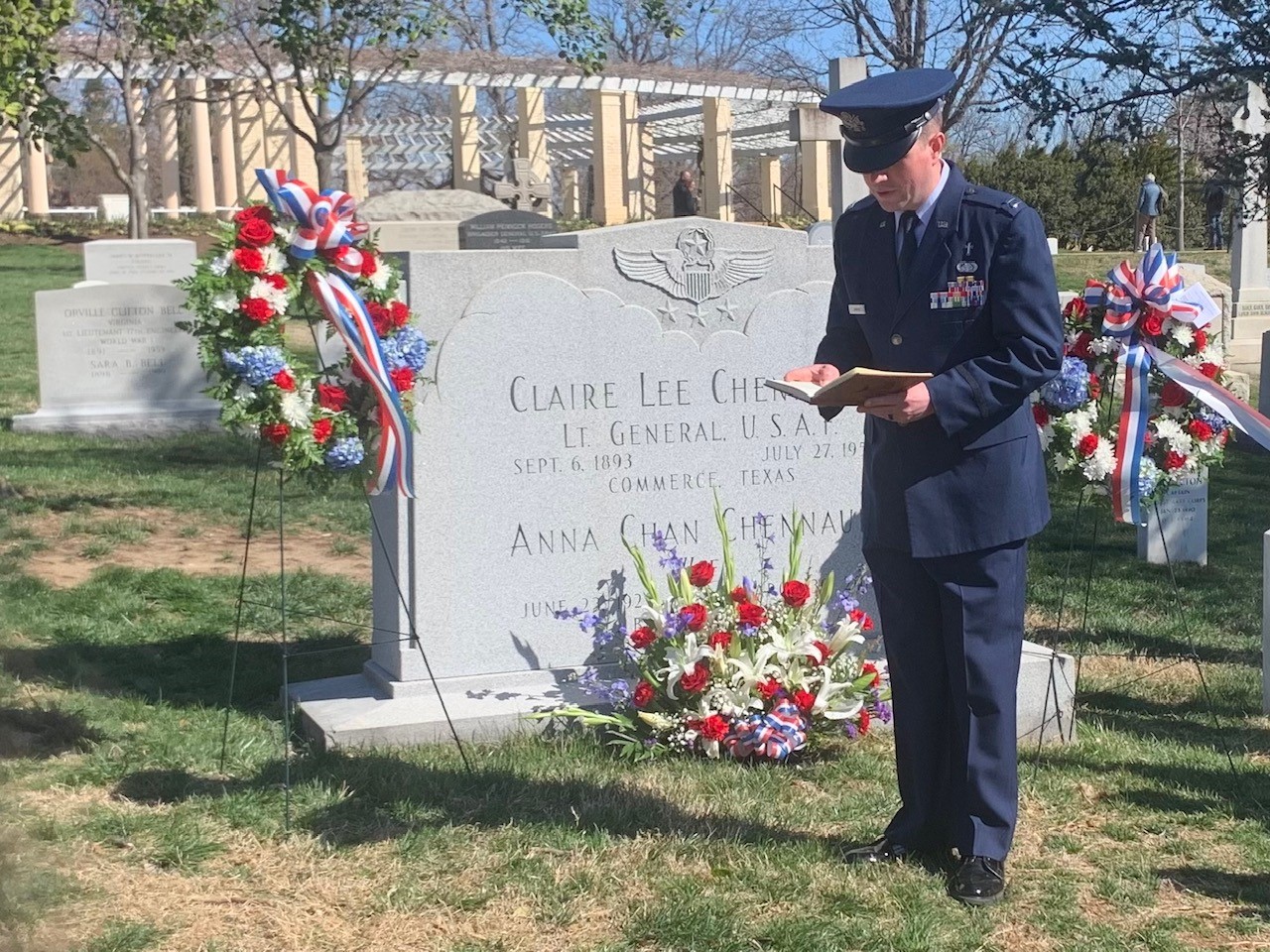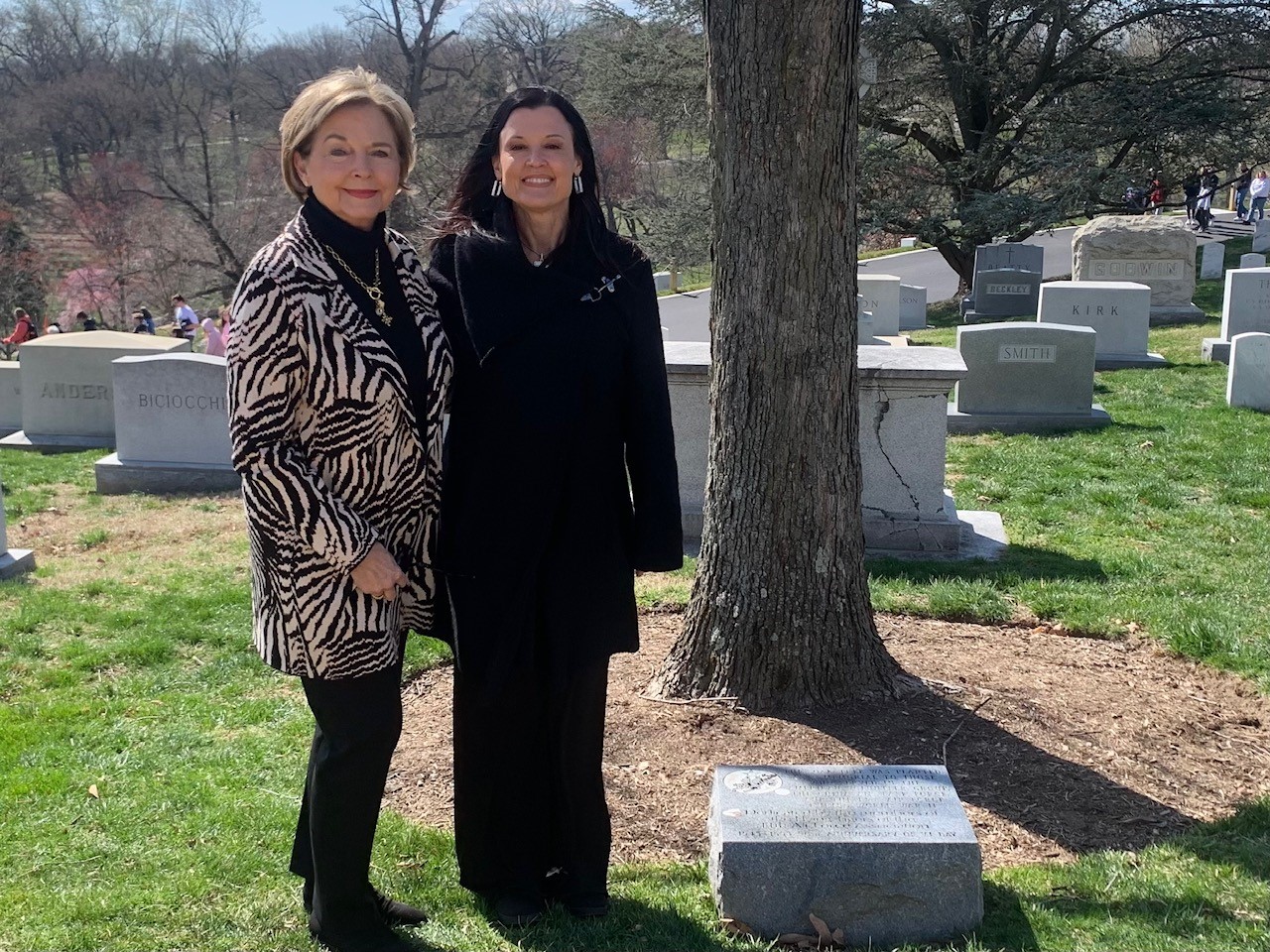
U.S. Army Air Forces Lt. Gen. Claire Chennault did everything within his power to protect China during World War II. Before the United States officially entered the war, he commanded the American Volunteer Group (AVG) —known as the “Flying Tigers”—which consisted of nearly 300 American pilots who volunteered to fight in the skies over Japanese-occupied China, as well as American nurses.
To honor Chennault’s service, sacrifice and leadership, around 80 people visited Arlington National Cemetery on March 26, 2025, to lay wreaths at his gravesite in Section 2. Ceremony attendees included Chennault’s descendants and those of Flying Tiger crewmen, as well as several Chinese citizens who had flown to the United States for the event.
Japan invaded China in 1937, beginning World War II in East Asia. In the summer of 1941, Chennault began training his Flying Tigers to assist with China’s fight for independence. All volunteers andpilots relinquished their military commissions to fly in China. The Tigers became famous for their distinctive tiger insignia and sharks’ head nose art on their aircraft. After the United States entered the war, stories of the Flying Tigers’ successful exploits provided hope—not only to the Chinese, but also to Americans reeling from the attack on Pearl Harbor.
In March 1943, the U.S. Army Air Forces activated its 14th Air Force, which included many former AVG members and adopted the “Flying Tigers” nickname and insignia. Chennault commanded the 14th Air Force for the remainder of the war, and it played a critical role in the Pacific Theater. Pilots flew supplies over “the Hump,” a treacherous 500-mile air route from India to China over the Himalayas. They also conducted heavy bomber raids against Japanese shipping off the China coast and destroyed Japanese aircraft.
U.S. Air Force Chaplain (Capt.) Matthew Lanham, who provided the opening prayer at the ceremony, called Chennault “the man whose courage soared as high as the skies he defended,” and described the Flying Tigers as a symbol of hope and resilience. Lanham added that Chennault and the Flying Tigers fought not for glory but for the lives of those suffering from Axis invasion and occupation. Lanham quoted Chennault’s famous words, “the one thing worse than fighting a war is losing one.”
Members of Chennault’s family stepped forward to lay two wreaths: one wreath from the descendants of his first wife, Nell, and one from his second wife, Anna. Each group bowed several times after laying their wreaths.
Chennault’s granddaughter, Nell Calloway, remembered her grandfather not as a great general but as a kind man who would put her and her brothers on his lap and ask them questions about their lives. She also referenced a letter she found from a Chinese orphanage, dated June 14, 1940, thanking her grandfather for a $600 donation.
Calloway said that she felt humbled by the Chinese citizens who attended to pay tribute to her grandfather. “After his sacrifice and what he was able to accomplish,” she said, “I just can't help but think that he's up there somewhere, just moved by this.”
The ceremony was equally emotional for several children of Flying Tiger pilots. Jody Marcon, whose father served as a test pilot for the 14th Air Force, choked up as Chaplain Lanham spoke. She also took pride in seeing so many grateful people at the event. “Seeing the Chinese people giving Chennault’s family such honor just blows me away,” she said.
Stephen Lone’s father, under Chennault, flew fighter and cargo aircraft over the Hump more than 400 times. “I'm here to honor Gen. Chennault,” he said. “There's so many people he influenced.”
As Calloway and her daughter, Amanda Claire Rutherford, left the service, they discovered the memorial oak tree dedicated by members of the Flying Tigers of the 14th Air Force Association, with a plaque that bears the Flying Tigers insignia. They made sure to have their picture taken under the tree to honor Chennault’s family and service legacy.
